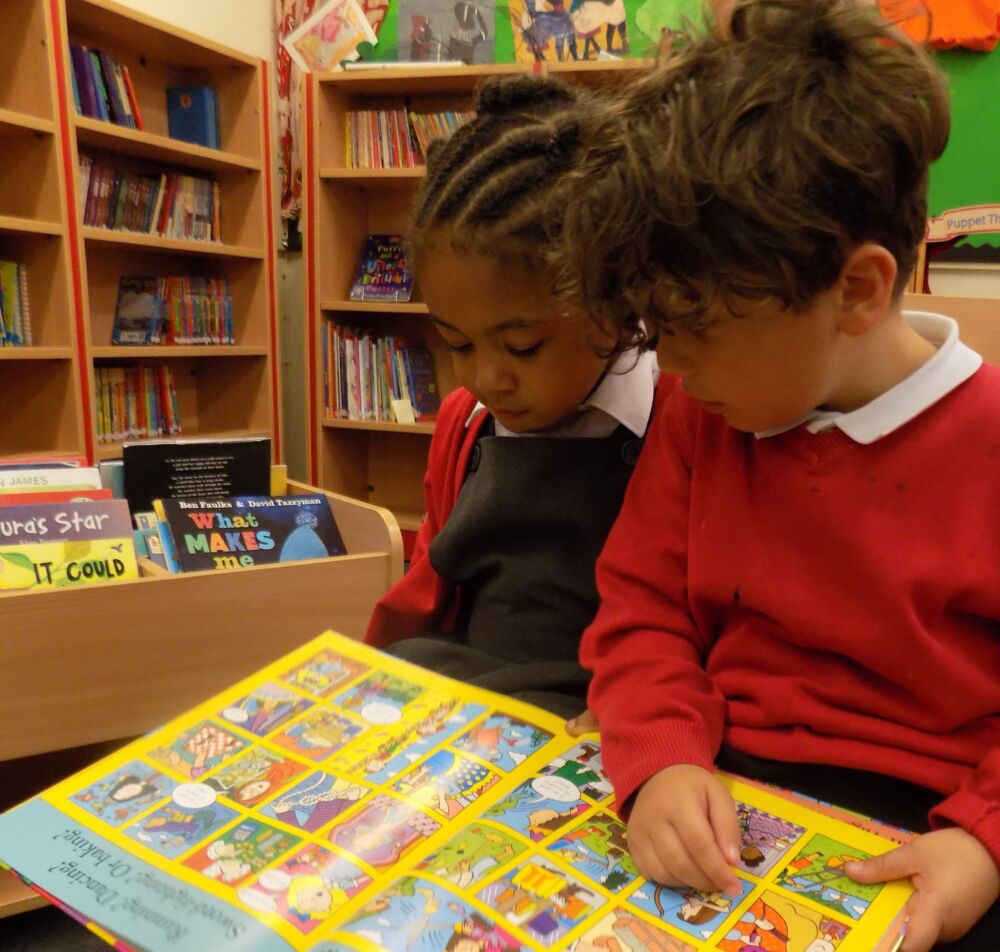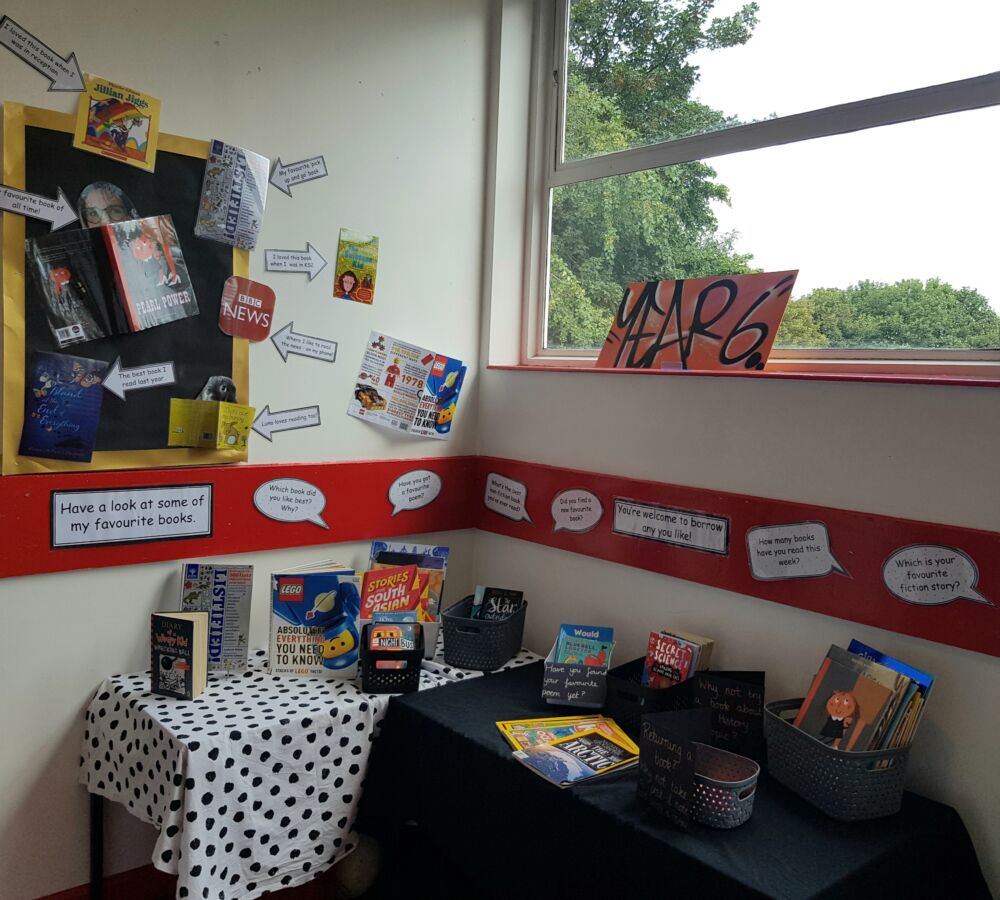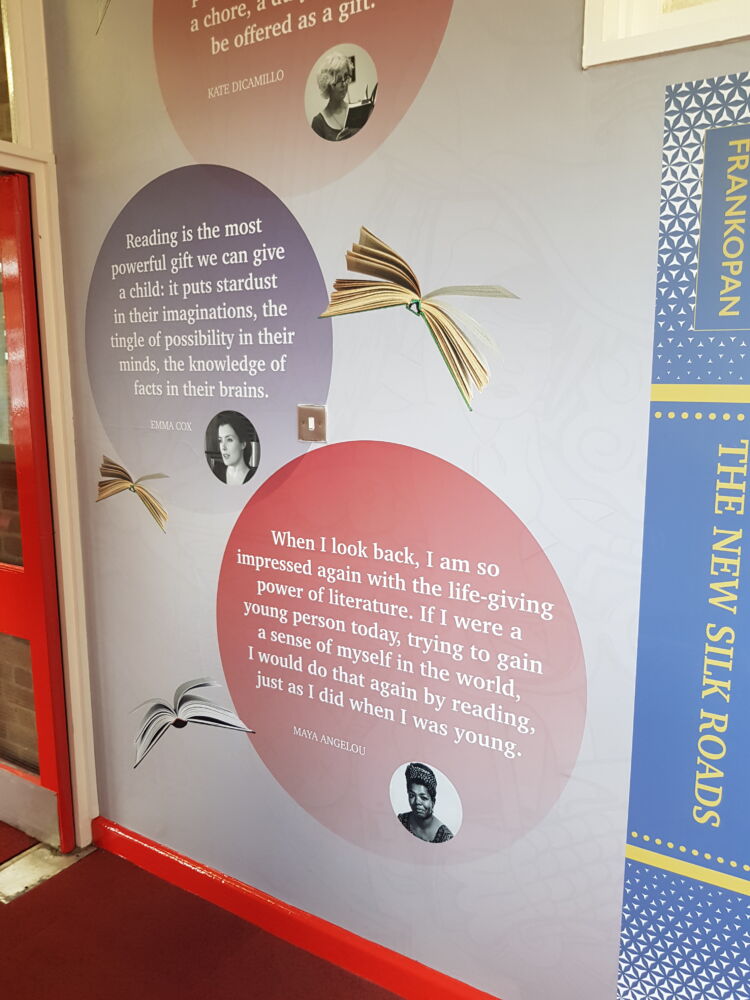Leading a Reading School: Practical Strategies
11 October, 2023 St Matthew’s CofE Primary School in Birmingham was the first school to win the OU/UKLA Whole School Reading for Pleasure Award in 2018 (now the Farshore Reading for Pleasure Teacher Awards). The award recognises a school’s commitment to embedding a reading for pleasure ethos and celebrates the innovative and creative ways that teachers have found to motivate and enthuse young readers.
St Matthew’s CofE Primary School in Birmingham was the first school to win the OU/UKLA Whole School Reading for Pleasure Award in 2018 (now the Farshore Reading for Pleasure Teacher Awards). The award recognises a school’s commitment to embedding a reading for pleasure ethos and celebrates the innovative and creative ways that teachers have found to motivate and enthuse young readers.As the Deputy Head and now Headteacher at St Matthew’s, Sonia Thompson has played a pivotal role in building and sustaining that reading for pleasure culture. In her second blog for Literacy Hive, Sonia shares some of the practical steps that she has introduced to help deliver the school’s reading for pleasure strategy.
Building on Strategic Foundations
At St Matthew’s, reading for pleasure sits at the very heart of who we are as a school. For us, providing access to high quality books and creating an environment that actively promotes reader enjoyment and agency is not a nice extra to have, but an issue of social justice and one of our key school improvement tools.
In my earlier blog, Leading a Reading for Pleasure School, we explored some of the strategic foundations that, I believe, need to be in place in order to drive a reading for pleasure agenda forward. Now I would like to share some of the everyday practices we have implemented to help us deliver that reading for pleasure strategy and the lessons we have learned along the way.
Carving Out the Time
As the Headteacher, you have to be a strong role model and set the weather for reading for pleasure in your school. And that starts with the timetable. One of the first things I did as a Deputy was to introduce the practice of reading aloud to our children at the end of every day. However, adding reading aloud to the timetable didn’t mean that things simply changed overnight. We had to monitor it. Teachers who were not in the habit of reading aloud would still take work up to the end of the day, so I had to go around and remind teachers to pack away and leave time to read aloud until it became the norm and a part of what we do as a school.
 Reinforcing the Message
Reinforcing the Message
A few years later, we introduced a new practice. By then, reading for pleasure was already embedded in our curriculum, but things were feeling a little bit tight for KS2. To address this, we put ourselves on a two-week rota:
- In Week 1, everyone does guided reading.
- In Week 2, we have two days of whole class reading and three days of what we call Read and Relax – a chance for everybody to down tools and simply read and relax.
When we first introduced Read and Relax, we had a consultant in to monitor what we were doing and she said, ‘I don’t think your children understand what Read and Relax is. I don’t think your teachers are clear about what they should be doing and what they are allowed to do.’ That was really interesting feedback. Teachers will stick with what they know so, if you are introducing something new and different, you have to be really explicit about what is involved. We had to say that it was ok to push the tables to one side and get the bean bags out. That the children could take their shoes off. That there was no need to plan. That Read and Relax meant exactly that: the opportunity for everyone – pupils and teachers – to read in a relaxed environment with time to share their reading experiences and talk about books. You have to keep repeating and reinforcing the message until every teacher understands that it is part of the pedagogy that you want to embed as a school.
Flexibility and Trust are Key
There are definitely times when it feels difficult to fit everything into the primary curriculum. While there are some things that we will never compromise on, such as reading aloud, it is vital to be flexible about timetables and to trust your teachers. They will know what to cut back on and where they need to spend a bit more time. While the SLT is always happy to support and make suggestions, we find that giving teachers the space to navigate their own timetables enables them to see that they can fit things in when they need to. When reading for pleasure is part of the culture of the school, teachers understand that they need to make time for it, in the same way that they have to make time to teach maths or PSHE.
 Funding a Reading for Pleasure Culture
Funding a Reading for Pleasure Culture
St Matthew’s does not have a PTA, so we have to rely on the school budget to fund our reading for pleasure curriculum. Every year there is an entry for reading for pleasure on our SIP with a budget allocation, just as there is for any other area of the National Curriculum. The money is used to:
- update the library so that it always feels fresh.
- renew the subscriptions on a range of comics and magazines, which have always been an important part of reading for pleasure in our school.
- provide funding so that every teacher can buy books for their classroom and create their own personal Reading Teacher display.
We also use part of our Pupil Premium budget to enable children to read for pleasure at home as part of our wider support strategies.
Engaging Your Parents
Engaging parents and ensuring that they understand the importance of reading for pleasure is very important for us at St Matthew’s. At the start of every school year, we run Inspire workshops where each class teacher has a chance to talk to parents about the key priorities for their children that year. Part of that is talking about the importance of reading for pleasure: the evidence base, the pedagogy and the support that we want from them.
We have been really consistent about including parents in our reading for pleasure curriculum wherever possible. When we have author visits, we ask if the author is happy for parents to attend their presentation, or if they would be willing to do a separate session specifically for parents. It’s about looking for opportunities to invite parents in so that they can see what we are doing with their children to engage them with reading.
 Connecting with the Wider World of Literacy
Connecting with the Wider World of Literacy
As the Head of a reading school, a key role is to signpost staff to information and resources that can support and promote reading for pleasure. That can mean simply helping teachers keep up to date with the latest children’s books by forwarding information about recent children’s book awards, signposting them to good review sources like Books for Keeps and Just Imagine, or ensuring that all our pupils visit our local library with their teacher.
It’s also about keeping a look out for high-quality programmes and projects from organisations that really understand reading and writing – that’s so important. We have used Just Imagine’s Reading Gladiators programme to support our more able readers and have been involved with projects from the National Literacy Trust and BookTrust.
At St Matthew’s, we follow the principles of Ron Berger’s Ethic of Excellence. One of the key elements of an Ethic of Excellence is the power that comes from ‘making work public’. For us that means providing our pupils with opportunities to take part in projects that go beyond the school gates. Last year, for example, we had four classes shadowing the CLiPPA.
It’s all about finding opportunities to celebrate reading for pleasure throughout the year so that it becomes part of your school’s culture. Tools like the Literacy Year calendar are great for that and I’d like to think that I have empowered my staff to be outward looking and that, as a school, we are now quite savvy about taking advantage of the events and opportunities provided by the wider world of literacy to promote reading for pleasure.
Change Takes Time
There has always been a reading for pleasure strand in the National Curriculum. It has always been part of our role as practitioners to help our pupils develop the will as well as the skill to read. While the DfE’s Revised Reading Framework makes that statutory duty more explicit, it’s important to remember that change takes time. I would say that three to five years is a realistic time frame to truly embed a culture of reading for pleasure, and even then it’s ongoing. That’s three to five years of talking about reading for pleasure, planning for it and providing regular CPD to keep reading for pleasure at the forefront of teachers’ minds. The research and pedagogy are there to support us and the evidence is clear – this is time well spent for children and teachers alike.

